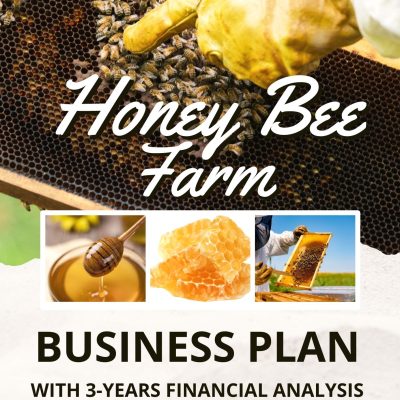Oil palm farming and palm oil production are vital to Nigeria and Africa’s economy. Nigeria is one of the largest producers of palm oil in Africa, with the industry providing jobs for millions of people. In 2023, Nigeria produced about 1.4 million metric tons of palm oil, but the country still imports palm oil to meet its local demand, which exceeds 2.7 million metric tons annually.
Oil palm farming involves cultivating palm trees, which take about 3-4 years to start producing fruit. Each palm tree can yield 10 to 20 tons of fresh fruit bunches per hectare annually. These fruits are processed to extract crude palm oil, which is then refined for various uses. Small-scale farmers, who make up about 80% of the industry, often sell their palm fruits to larger processing companies, but some also produce palm oil themselves using traditional methods.
Palm oil production is a profitable business. A ton of crude palm oil can sell for about N400,000 to N600,000 in Nigeria, depending on the quality and market conditions. With modern processing equipment, a small-scale farmer can produce 1-2 tons of palm oil per hectare each year. This can significantly increase income compared to selling raw palm fruits. Additionally, palm kernel oil, a byproduct of palm oil production, is also valuable, adding to the profitability of the business.
Growing oil palm trees and producing palm oil benefits farmers and also contributes to reducing the importation of palm oil in Nigeria and other African countries. This helps in saving foreign exchange and strengthens the local economy.
CONTENT:
1. EXECUTIVE SUMMARY
1. MISSION, VISSION, OBJECTIVE, AND VALUES
1.1 Mission
1.2 Vision Statement
1.3 Corporate Objectives
1.3 Long Term Objectives
1.4 Corporate Values
1.5 Business Description
1.7 Location of business
1.8 Reasons for choosing the location
1.9 Type of Business
1.10 Registration and Licenses
2. PRODUCT & SALES
1. THE MARKET
3.1 Industry Overview
3.2 PEST (Political, Economic, Social and Technological) Analysis
Political Factors
Economic Factors
Social Factors
Technological Factors
3.3 Market Trends
3.4 Our Target Market
3.5 Our Competitive Advantage
3.6 Sales and Marketing Strategy
3.6.1 Sources of Income
2. PRODUCTION PLAN
5.1 Direct materials required for production
Table 1: 10-Acre Palm Garden
5.2 OIL PALM PLANTATION: CULTIVATION AND MANAGEMENT
Guidelines On Oil Palm Cultivation
5.2 OIL PALM PROCESSING
5.2.1 Direct materials required for production
5.2.2 Machine/Equipment images and functions
5.2 The Production Process of Palm Oil
Bunch Reception
Stripping
Milling
Clarification
Storage
Packaging
5.3 The Production Process of Palm Kernel Oil Nut drying
Nut cracking .
Cooking .
Milling and Expelling..
Compression
Measuring and storage.
Packaging..
5.4 Indicators of Quality and Quality Assurance
5.5 Production Forecast
Table 3: Production forecast
5.6 Production Assumptions.
5.7 Plant Maintenance Policy
3. Marketing Plan
6.1 Marketing Objectives
6.2 Target Market
6.3 Marketing Mix
6.3.1 Product
6.3.2 Pricing
6.3.3 Promotion Personal Selling
6.3.4 Advertising
6.3.5 Place
6.3.6 Distribution
4. SWOT Analysis
Table 7: SWOT Matrix
Competition Strategies
5. Sales Forecast for Years 4 – 8
Table 8 Price List of palm oil
Table 10: Price List of other by-products
6. Organizational Plan
8.1 Job Analysis
8.2 Training and Development
7. FINANCIAL PLAN
9.1 Start-Up Cost
9.1.1 Land Clearing
9.1.2 Table 15: Farm Operating Cost
9.1.3 Table 16: Capital Expenditure
8. Capital Structure Decision
10.1 Summary of Financial Projections
Table 18: 10.1.3 Projected Cash flow Statements for Year 4 – 8
Table 19: 10.1.2 Summary of projected balance sheets for 5 years (years 4 to 8)
9. Financial Analyses Assumptions Underlying The Financial Estimates
11.1 Profitability ratios
Table 20: Gross profit margin
Table 21: Net profit margin
Table 22: Net Present value (NPV)
Payback period = 5year.
10. Risk Management
12.1 Risks of WURAOLA Oils
12.2 Risk Management Strategies of WURAOLA Oils
11. CONCLUSIONS/ Recommendations and Limitations
13.1 Main Findings.
13.2 Recommendations
LIST OF TABLES
Equipment Required For Processing Palm Oil
Equipment for Palm Kernel Processing
Other Equipment
Production Forecast
Fresh Fruit Bunches Required For Production and Their Cost
Litres of Palm Oil
Litres of Palm Kernel Oil
SWOT Matrix
Price List of Palm Oil
Summary of Sales Projections of Palm Oil and Palm Kernel Oil
An Overview of Staff Strength
Details of Start-Up Cost
54 pages
Click ADD TO CART now.



